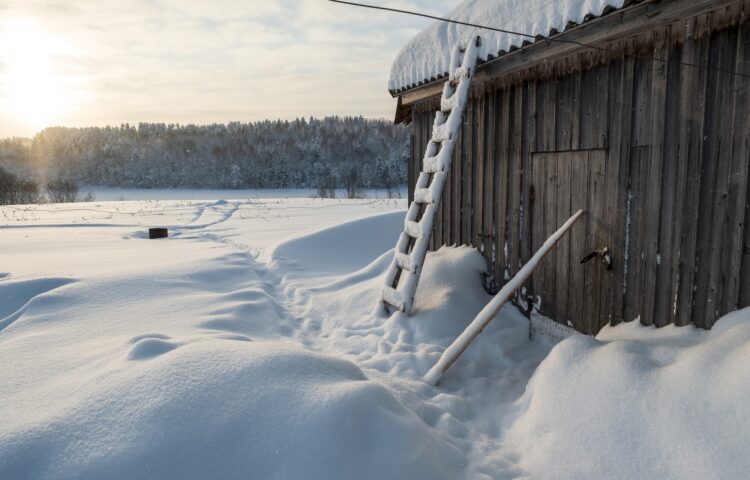Relocating to a rural area offers fresh air, spacious surroundings, and a slower pace of life. However, moving to a less populated region brings unique challenges, from self-sufficiency to home maintenance and social integration. With preparation and practical strategies, you can embrace rural life and enjoy comfort, safety, and creativity in your new home.
1. Preparing Your Rural Home
Winterizing and Maintenance
Rural homes, especially in colder climates, require proper insulation and heating. Check your roof, windows, and doors for drafts and consider installing energy-efficient heating solutions.
Roof heating systems can prevent ice buildup and damage during winter. Regular maintenance ensures warmth, reduces energy costs, and prevents long-term issues. Roof heating systems
DIY Home Improvement Projects
Rural living often involves more hands-on upkeep. Simple DIY projects such as reinforcing doors, sealing windows, and repairing fences can save money and improve home comfort.
Using certified tools and following safety guidelines is crucial. Certified weights help ensure projects are stable and safe.
Organizing for Seasonal Changes
Plan for snow, ice, and outdoor maintenance. Stock up on snow removal tools, fuel, and emergency kits. Proper preparation keeps daily life smooth and reduces unexpected stress.
Seasonal readiness ensures safety and comfort while embracing rural independence.
2. Launching a Personal Blog
Finding Your Niche
Moving to a rural area can inspire stories about homesteading, nature, DIY projects, or local culture. Identify your niche and target audience to make your blog engaging and valuable.
Sharing personal experiences connects you with like-minded readers and builds community online.
Content Creation and Promotion
Use practical content such as tutorials, tips, and photo diaries. Highlight unique aspects of rural life that appeal to urban readers or other rural enthusiasts.
Collaborate with platforms like Ignite Digital to grow your blog audience quickly and effectively.
Consistency and Interaction
Update your blog regularly and engage with readers through comments, social media, or newsletters. Consistency builds credibility and keeps your audience interested.
Interactive content and feedback enhance connection and foster community engagement.
3. DIY Home Projects for Rural Living
Gardening and Landscaping
Rural homes offer space for vegetable gardens, flower beds, or small orchards. Start with soil preparation, irrigation, and seasonal planting plans.
DIY landscaping improves property value and provides sustainable food options.
Home Repairs and Upgrades
From repairing fences to upgrading insulation, rural homeowners often handle projects themselves. Tools, certified materials, and proper guidance ensure safety and efficiency.
Routine maintenance reduces costs and prevents larger issues down the line.
Creating Comfortable Spaces
Rural homes may need cozy interiors to offset winter isolation. Use rugs, lighting, and furniture arrangement to create inviting living spaces.
These simple upgrades make your rural home feel welcoming and functional.
4. Navigating Rural Transportation
Vehicle Preparation
Living farther from urban centers requires reliable transportation. Equip vehicles for winter, maintain fuel reserves, and keep emergency kits handy.
Proper preparation prevents accidents and ensures mobility even in harsh conditions.
Planning Travel Routes
Familiarize yourself with local roads, weather patterns, and alternative routes. Planning minimizes travel delays and enhances safety.
Rural navigation requires proactive awareness and contingency plans.
Access to Services
Identify nearby grocery stores, healthcare providers, and emergency services. Plan trips efficiently, especially during winter, to avoid unnecessary risk.
Reliable access improves quality of life and reduces stress.
5. Settling Into the Community
Building Connections
Engage with neighbors, attend local events, and join clubs or organizations. Rural communities often rely on personal connections and mutual support.
Developing relationships enhances your sense of belonging and access to resources.
Local Activities and Hobbies
Participate in seasonal sports, gardening groups, or crafting circles. Hobbies help meet people and create meaningful routines.
Involving yourself in local life enriches the rural experience and boosts personal fulfillment.
Home Safety and Positivity
Maintain a safe and pleasant environment with proper lighting, secure structures, and mindful decor. Combining safety with comfort ensures long-term happiness in your rural home.
Conclusion
Moving to a rural area requires planning, creativity, and a hands-on approach. From DIY home projects and winter preparation to launching a blog and integrating into the community, careful strategies make rural living rewarding.
Embracing these practices ensures your new home is safe, functional, and a true reflection of your lifestyle.

